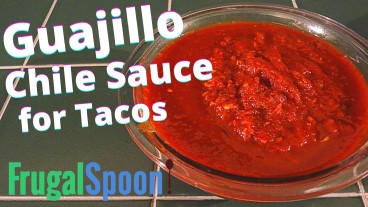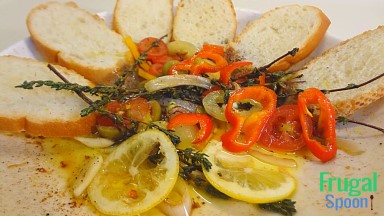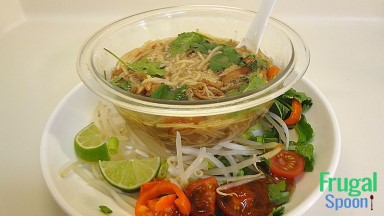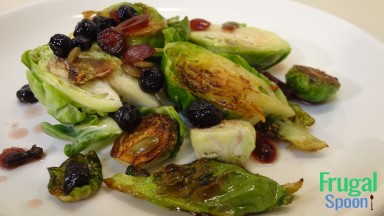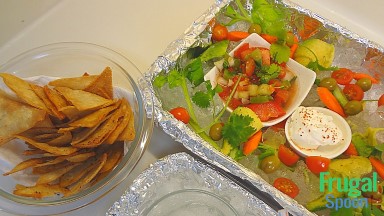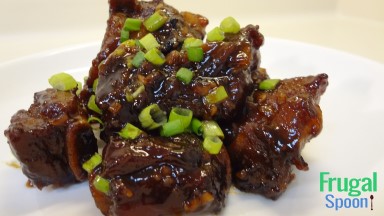Guajillo Chili Sauce for Tacos
Published: April 22, 2021 by Ivan
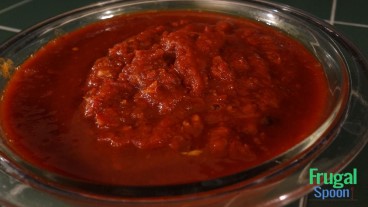

There are many things to love about Mexican food, but the topping sauce on tacos has to be the best. Guajillo chili sauce is one of many chili sauces made from dried chiles. Guajillo is very mild in heat and has a nice festive earthy taste that complements tomato-based sauces.

Guajillo chili sauce matches well with citrus, adds moisture to grilled meats, and makes every bite of Mexican food more savory and memorable. When I think of this sauce on two tacos, then I always ask for four.
INGREDIENTS:
10 Guajillo Dried Chiles
Available at Amazon https://amzn.to/3l3Msot
3 Romano Tomatoes
1 White Onion
4 Garlic Cloves
1 tsp Dried Oregano
1 Large Bay Leaf
8 Peppercorns
1½ cup Water
1 tsp Sea Salt
Brown Sugar to taste if needed.
How to make Guajillo Chili Sauce for Tacos
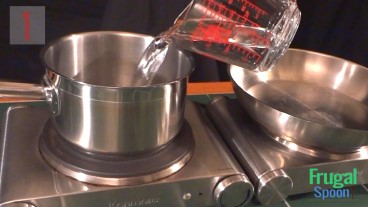
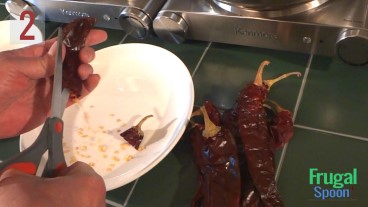
1. Place 1 ½ cup water to boil in a medium-size pot with a lid. Set a large skillet to a warm temperature setting. The water can be replaced with 1 ½ cups of chicken stock or beef stock. The difference between store-bought stock and broth is that broth is used in soup recipes so there is more salt than with stock. Adjust the salt in this recipe if you used chicken or beef broth. Turn off the heat once the water boils.

2. Dried chiles need to be roasted on low heat. The low heat will wake up the chiles. Break off the stem of the chile, and allow the seeds to fall out. Split the chile to open the interior to allow more seeds to fall out. You don’t have to remove all the seeds. A few loose seeds in the sauce will not affect the flavor of the sauce. The seeds that can be seen in the sauce are primarily tomato seeds and not chili seeds. But they look alike in the sauce. If you prefer, you can also remove the white interior flesh between sections of the chili. The flesh is similar to the white flesh found inside green bell peppers. They tend to have a bitter taste. I don’t remove them from my sauce. I find a little brown sugar can overcome the bitterness of the flesh if it is left in the sauce. But in general, I don’t add sugar since the bitterness is very mild a worse.
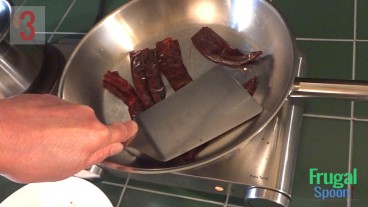

3. Place the peppers in the warm pan without oil and hold them down for two minutes with a spatula, then rotate the peppers and repeat. The peppers should start to bloom and become fragrant. Otherwise, turn up the heat slightly. The peppers are done roasting once they bloom and you can smell the peppers. The peppers will be dry to the touch but as they warm they take on light tacky moistness like raisins. The chiles will be warm, but they can still be handle with your bare hands. We are not using a lot of heat. This process does not take long. Over-roasted dry peppers taste bitter.

4. Transfer the pepper to the hot water. The peppers will need 20-30 minutes to soften and absorb the water. Wipe the frying pan of any seeds etc. Any left-over chili material left in the pan will become bitter as it continues to roast. Add another batch of chiles to the roasting pan if needed and repeat the process of roasting.
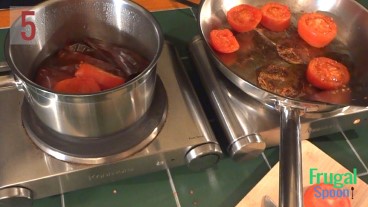

5. Set the 11-inch pan to med-high temperature so we can lightly roast the other ingredients. If you prefer other methods of roasting vegetables, then see my recipe/video “White Rice and Roasted Peppers.” You may need to roast the following in batches since the ingredients need space for roasting. Slice the stem off the tomatoes and slice the tomato into three equal parts. Roast the tomatoes for 2-3 minutes on each side. Tomatoes have sugar, so the pan will have to be rinsed, or replaced with another pan before the next batch of veggies. Add the roasted tomatoes to the warm 4-quart pot of chilies as they finish roasting. Peel and chop the onion and garlic into large pieces and add them to the clean roasting pan. Roast all sides of the veggies to a light brown color. Over-roasting the veggies will make them taste bitter as well. Add the roasted veggies to the 4-quart pot as they finish roasting.

6. Remove the 4-quart pot from the burner on the last batch of roasted veggies and place the pot on a potholder so we can blend the ingredients. Add 1 tsp dried oregano and 8 peppercorns to the 4-quart pot. Use a hand mixer or a blender to blend the ingredient until smooth. You have the option to strain the sauce but our hand mixer blends everything very well.
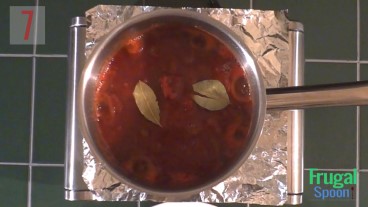

7. Heat the sauce on medium heat in the 4-quart pot. Add a few bay leaves and 1 tsp sea salt. Stir the ingredients. Leave the bay leaves whole in the sauce. We will remove the bay leaves once the sauce is finished. Allow the sauce to simmer until it reaches your desired thickness. Add water, broth, or stock to the sauce if you want to thin the sauce.

8. Allow the sauce to cool in a serving bowl. The sauce does not necessarily need to be served hot. unless you are using chicken or beef stock or broth. Any loose Guajillo seeds will not change the flavor of the sauce, but hopefully, you will see a lot of tomato seeds. The tomato seeds give the impression of heat and add to the beauty of the sauce. Remove the bay leaf before serving. Refrigerate the unused sauce and reheat the sauce to a safe temperature before serving for chicken or beef.

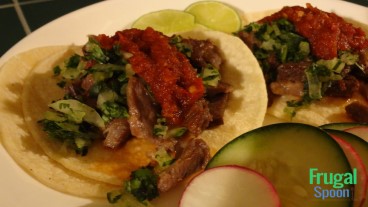
The sauce is so slightly sweet with a little tang. Heat level from zero heat to 10 is a 1. Mexican food is all about fresh layered flavors. Serve your Guajillo sauce with fresh vegetables like cucumber, cauliflower, carrots, and radishes. Guajillo chili sauce is amazing on grilled shrimp and tacos.

Garnish with chopped cilantro and white onions. Serve with lime and lemon slices ready just to add another layer of flavor.
Thanks for stopping by. I hope you enjoy your own Guajillo Chili Sauce.. Remember to share your recipes.
Until next time. Adios…Ivan
Contact Us
Contact
Let's chat!
Need more information? Send me an email or drop me a line.
- Ivan@FrugalSpoon.com
- Mail: 127 E Locust St #91, Fairbury, Il. 61739

